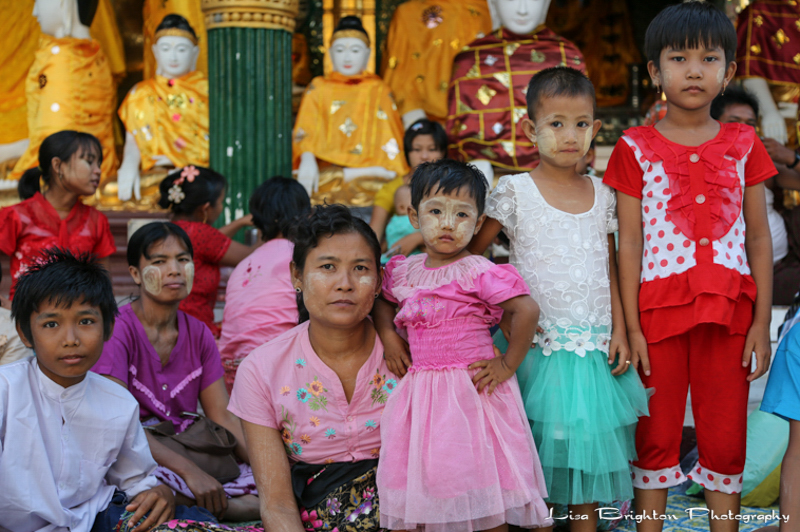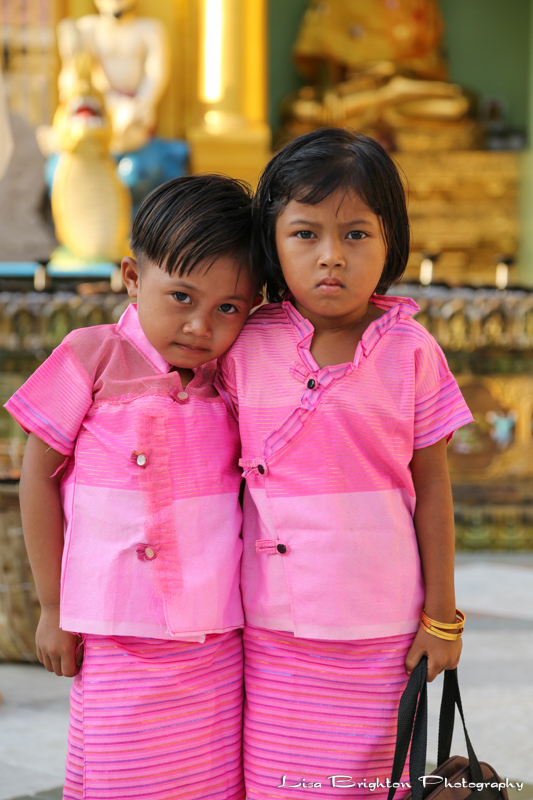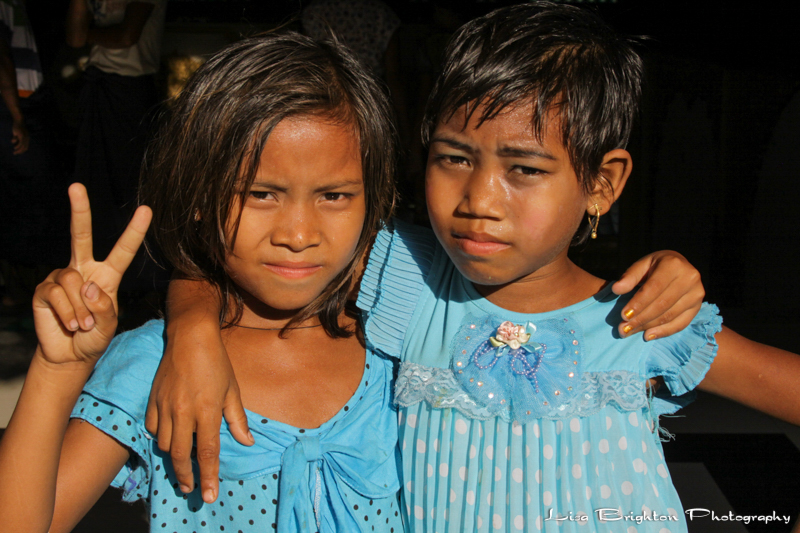17. Warriors
 I’m editing my photos on my laptop from the last week of shooting, and I’m struck by how expressive some of the women and children are in their poses. I never tell people how to pose, so I’m surprised that so many women and children showed me their strong side when I asked to photograph them. After I took their images and showed them the photos, smiles broke out on their faces. They all seemed pleased with what they saw. I, on the other hand, don’t know what to think because I’ve never captured such powerful expressions day after day. It makes me wish that I’d asked them what they were thinking when I photographed them — but that’s another thing I never do. It’s rare for me to spend time pondering why someone has chosen to express themselves a certain way. This time is different for me, though. I’m curious about the people here. I’m very curious. Did they want me to know how resiliently they
I’m editing my photos on my laptop from the last week of shooting, and I’m struck by how expressive some of the women and children are in their poses. I never tell people how to pose, so I’m surprised that so many women and children showed me their strong side when I asked to photograph them. After I took their images and showed them the photos, smiles broke out on their faces. They all seemed pleased with what they saw. I, on the other hand, don’t know what to think because I’ve never captured such powerful expressions day after day. It makes me wish that I’d asked them what they were thinking when I photographed them — but that’s another thing I never do. It’s rare for me to spend time pondering why someone has chosen to express themselves a certain way. This time is different for me, though. I’m curious about the people here. I’m very curious. Did they want me to know how resiliently they  are living with the challenges in Myanmar? Am I reading too far into this? If it’s the former, I see it. It’s even in the eyes of the children who aren’t old enough to understand the politics in their country. To find some clarity, I hop on the Internet. I start researching life in Myanmar and read eye-opening statistics. I read that 75 percent of the women here are in the labor force and 30 percent of Myanmar’s total population lives below the poverty line. When it comes to education, Myanmar ranks 164th out of 168 countries for expenditure on education, spending only 1.3 percent of its GDP on education. Education is compulsory until the end of elementary school. After that, only 18 percent of females have a secondary education above the 10th grade. To make matters worse for women, I read that if parents are financially strained and forced to choose which of their children they can send to school, they traditionally send their boys and keep the girls at home to help around the house, farm or workshop. When the children are young, that serves as a quick fix. But that decision perpetuates inequities between the sexes. I want to quit reading, but I don’t. I search for “Myanmar adoption laws” and read that Burmese law does not allow for the adoption of Burmese children by foreign nationals. It’s reported that children are sold for as little as $40 USD into forced labor, human trafficking and the military. One article states that it’s estimated that 70,000 of the country’s 375,000 soldiers are children. Now I really want to quit reading… But I persist. I need to find a bright spot to go along with all of the beautiful experiences I’ve had and photographed this week. The statistics I’m reading about are anything but bright. They’re sobering to say the least. Even worse, I know they represent only a
are living with the challenges in Myanmar? Am I reading too far into this? If it’s the former, I see it. It’s even in the eyes of the children who aren’t old enough to understand the politics in their country. To find some clarity, I hop on the Internet. I start researching life in Myanmar and read eye-opening statistics. I read that 75 percent of the women here are in the labor force and 30 percent of Myanmar’s total population lives below the poverty line. When it comes to education, Myanmar ranks 164th out of 168 countries for expenditure on education, spending only 1.3 percent of its GDP on education. Education is compulsory until the end of elementary school. After that, only 18 percent of females have a secondary education above the 10th grade. To make matters worse for women, I read that if parents are financially strained and forced to choose which of their children they can send to school, they traditionally send their boys and keep the girls at home to help around the house, farm or workshop. When the children are young, that serves as a quick fix. But that decision perpetuates inequities between the sexes. I want to quit reading, but I don’t. I search for “Myanmar adoption laws” and read that Burmese law does not allow for the adoption of Burmese children by foreign nationals. It’s reported that children are sold for as little as $40 USD into forced labor, human trafficking and the military. One article states that it’s estimated that 70,000 of the country’s 375,000 soldiers are children. Now I really want to quit reading… But I persist. I need to find a bright spot to go along with all of the beautiful experiences I’ve had and photographed this week. The statistics I’m reading about are anything but bright. They’re sobering to say the least. Even worse, I know they represent only a  sliver of the reality here. As a traveler and outsider looking in through my lens, it can be difficult to catch the country’s undercurrent. It takes time to find that behind the beautiful landscapes and pretty photographs. But there is no mistaking it, life in Myanmar is hard. I could continue researching and discovering more about both ends of the spectrum since Myanmar is full of complexities, but I close my browser. I take a break from researching and go back to the faces in my photographs. I look at a little girl in a family photo who is wearing a pink dress and posing with her hands on her hips. The thanaka (sunblock) that she wears on her face looks like a warrior’s war paint. I study the expression in her eyes and then look at the eyes of the others in my photos. They all look like warriors… I think that as this nation works to discover itself and find its place in the world, these strong-willed warriors will adapt just fine to the rapidly changing global pace.
sliver of the reality here. As a traveler and outsider looking in through my lens, it can be difficult to catch the country’s undercurrent. It takes time to find that behind the beautiful landscapes and pretty photographs. But there is no mistaking it, life in Myanmar is hard. I could continue researching and discovering more about both ends of the spectrum since Myanmar is full of complexities, but I close my browser. I take a break from researching and go back to the faces in my photographs. I look at a little girl in a family photo who is wearing a pink dress and posing with her hands on her hips. The thanaka (sunblock) that she wears on her face looks like a warrior’s war paint. I study the expression in her eyes and then look at the eyes of the others in my photos. They all look like warriors… I think that as this nation works to discover itself and find its place in the world, these strong-willed warriors will adapt just fine to the rapidly changing global pace.
